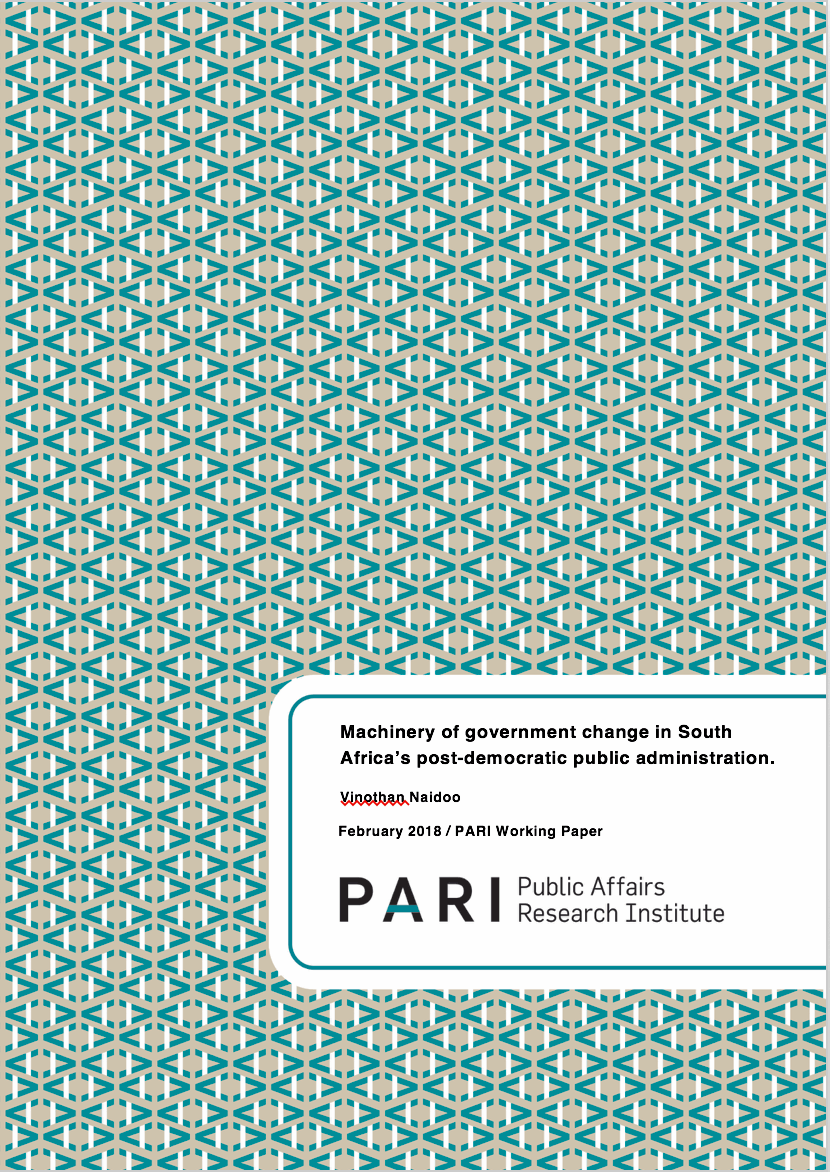WORKING PAPER | FEBRUARY 2018
Machinery of Government Change in South Africa’s Post-democratic Public Administration
South Africa’s public administration machinery underwent extensive organisational remodelling following the country’s 1994 democratic transition. The structure of the country’s bureaucracy under white minority rule was inordinately complex, driven by the illusory aim of providing designated racial groups with the political and administrative machinery to service the needs of their constituents. Despite the transition to a non-racial state machinery following the end of white minority rule, the organisational dimension of state ‘transformation’ – in the South African lexicon – has been largely overlooked, with the literature focusing on a host of more politically-sensitive issues such as personnel restructuring to promote racial representivity, service delivery analysis, and maladministration and corruption. In an effort to address this gap in the story of state transformation, I trace the structural evolution of South Africa’s state machinery in the democratic period. I give an illustrative account of the organisational composition and lifecycle of the state’s public administration, with a focus on national machinery. I also provide a narrative analysis of the political and policy drivers that have shaped machinery change since 1994. I find that the national machinery has been on an expansive trajectory, although with discernible variation in intensity across different presidential incumbents. Macro-organisational change has unfolded in the absence of a clear strategic blueprint, and in conjunction with a coherent programme of public sector reform. This has resulted in state machinery which displays ineffectual performance, appears ill suited to co-ordinating evolving policy demands, and, in more recent times, has become more acutely vulnerable to prevailing patronage demands.


